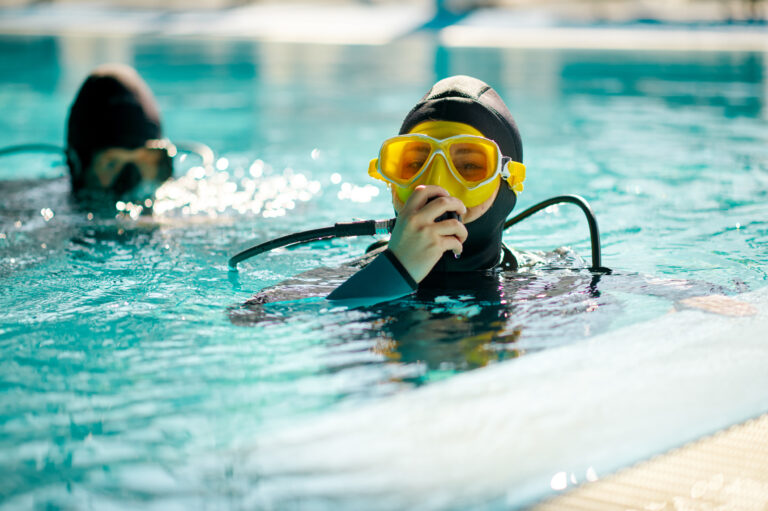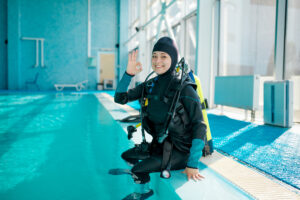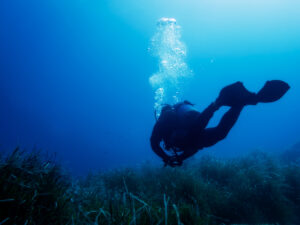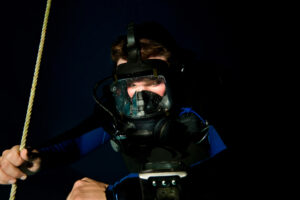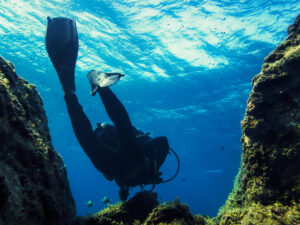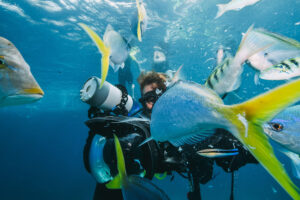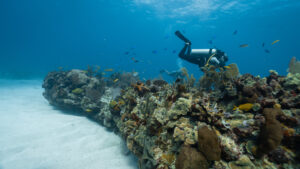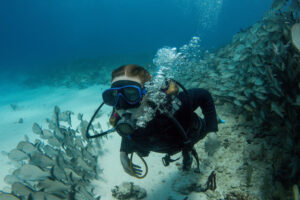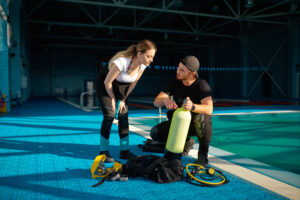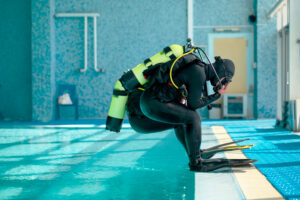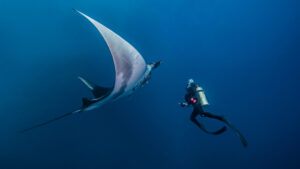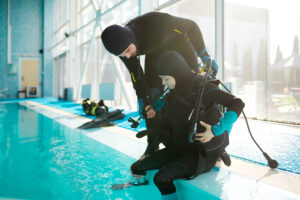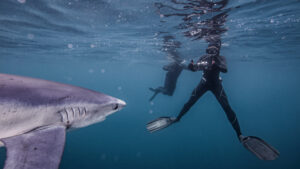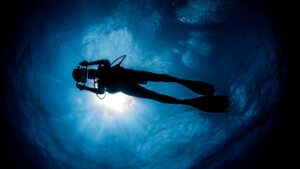What is a Pushing Tide?
A pushing tide, often referred to as a flood tide, is a natural oceanographic phenomenon where the incoming tide causes seawater to flow toward the shore. This type of tide plays a significant role in coastal environments and activities, particularly in scuba diving. Understanding pushing tides is crucial for divers as it affects both the safety and the overall experience of their underwater ventures. In essence, a pushing tide can significantly influence water conditions, marine life behavior, and the physical landscape of dive sites.
Physical and Oceanographic Background
Tides are primarily caused by the gravitational pull exerted by the moon and the sun, along with the rotation of the Earth. This gravitational interaction causes periodic rises and falls in sea levels, known as tides. Among the various tidal movements, the pushing tide is characterized by the movement of water from the sea towards the coast. It contrasts with the ebb tide, which involves the water retreating back to the sea.
A pushing tide occurs in a cyclical pattern, typically twice a day, aligning with the lunar day which is approximately 24 hours and 50 minutes. The gravitational forces of the moon have a more pronounced effect due to its proximity to Earth compared to the sun. During a pushing tide, the water level rises, leading to an increase in coastal water depth and a noticeable shift in water currents towards the shore.
This tidal movement is distinct from other tidal phenomena such as slack tide, where there is little to no horizontal water movement, creating a period of relative calmness in the water. Another contrasting phenomenon is the pulling tide, or ebb tide, which is the opposite of a pushing tide and involves water moving away from the shore. Understanding these differences is essential for comprehending the full scope of tidal behavior and its impact on marine and coastal activities.
Impact on Marine Environments
Pushing tides have a profound effect on coastal topography. As water flows towards the shore, it brings with it sediments and nutrients that can reshape the seabed and influence the growth of marine vegetation. This sediment transport can lead to the formation of new sandbars, changes in coastal landforms, and the creation of tidal pools which serve as unique habitats for various marine organisms.
The influence of pushing tides on marine ecosystems is substantial. The influx of nutrients carried by the incoming tide can promote the growth of phytoplankton, which serves as the base of the marine food web. This, in turn, supports a diverse array of marine life, from small invertebrates to larger fish and marine mammals. The dynamic nature of pushing tides also creates a constantly changing environment that many marine species have adapted to, contributing to the biodiversity of coastal areas.
Several regions around the world are known for their prominent pushing tides and the unique marine environments they support. For instance, the Bay of Fundy in Canada experiences some of the highest tidal ranges in the world, with pushing tides that can raise the water level by as much as 16 meters (52.5 feet). These extreme tidal conditions create a rich and diverse ecosystem, making it a hotspot for marine biodiversity and a prime location for scientific research.
Implications for Scuba Diving
For scuba divers, pushing tides present both opportunities and challenges. One of the primary safety concerns is the strength of the currents associated with these tides. As the water moves towards the shore, it can create powerful currents that can be difficult to swim against. Divers need to be aware of these conditions and plan their dives accordingly to avoid being caught in strong currents that could lead to dangerous situations.
Navigation during a pushing tide can also be challenging. The changing water levels and currents can affect visibility and the physical layout of the dive site. Divers may find that familiar landmarks are submerged or that new obstacles have been created by the moving water. Proper dive planning and the use of reliable navigation tools are essential to ensure a safe and enjoyable experience.
Pushing tides also play a critical role in the timing of dives. Many dive sites are best visited during specific tidal conditions to maximize safety and visibility. For instance, diving during slack tide, the period between pushing and pulling tides, is often recommended because the water movement is minimal, providing better visibility and easier navigation. Understanding the timing and characteristics of pushing tides helps divers choose the optimal times for their underwater excursions, enhancing both safety and the overall diving experience.
Pushing Tides in Different Geographical Locations
Pushing tides vary significantly in different parts of the world, influenced by factors such as geographical location, coastal topography, and the alignment of the sun and moon. In some areas, pushing tides can be relatively mild, while in others, they can be quite dramatic and influential.
In the United Kingdom, the Bristol Channel experiences one of the highest tidal ranges in the world, with pushing tides that can raise water levels by up to 15 meters (49.2 feet). These extreme tides create strong currents and rapidly changing conditions, presenting unique challenges and opportunities for divers. Similarly, the coasts of Western Australia are known for their significant tidal movements, with pushing tides that can dramatically alter the landscape and diving conditions within a short period.
Notable diving spots affected by pushing tides include the Great Barrier Reef in Australia, where the incoming tides bring nutrient-rich waters that support a vibrant marine ecosystem. The Maldives also experiences pronounced pushing tides, which contribute to the rich biodiversity of its coral reefs. Divers in these regions must be well-versed in tidal patterns to ensure safe and rewarding underwater experiences.
Seasonal variations also play a role in the effects of pushing tides. In many regions, tidal ranges can be more pronounced during certain times of the year due to the alignment of the Earth, moon, and sun. For example, spring tides, which occur during the new and full moon phases, result in higher pushing tides and stronger currents. Being aware of these seasonal changes is crucial for divers planning their trips.
Techniques and Tips for Divers
Diving during pushing tides requires specific techniques and considerations to ensure safety and enjoyment. One of the best practices is to thoroughly research and understand the tidal patterns of the chosen dive site. This includes consulting tide charts, local dive guides, and experienced divers who are familiar with the area. Knowing the timing and strength of the pushing tide can help divers plan their entry and exit points, as well as the optimal times to be underwater.
Equipment considerations are also essential when diving in areas with significant pushing tides. Divers should ensure that they have reliable buoyancy control devices, as well as navigation tools such as compasses and dive computers to help manage the dynamic conditions. In some cases, additional safety equipment, such as surface marker buoys, may be necessary to signal their location to the surface team or other boats in the vicinity.
Experienced divers often recommend using the currents to their advantage rather than fighting against them. For instance, starting a dive upcurrent and allowing the pushing tide to carry them along can conserve energy and provide a more relaxing experience. This technique, known as drift diving, is particularly effective in areas with strong tidal currents and can lead to encounters with marine life that thrive in these dynamic environments.
Maintaining close communication with dive buddies and surface support teams is crucial during pushing tides. Clear signals and pre-dive briefings can help ensure that all team members are aware of the tidal conditions and the planned dive route. In areas with strong pushing tides, it is also advisable to have a contingency plan in case conditions change unexpectedly.
Key Takeaways
Understanding pushing tides is essential for anyone involved in scuba diving, as these tidal movements significantly impact water conditions, marine life, and dive safety. By being aware of the characteristics and effects of pushing tides, divers can plan their activities more effectively, ensuring a safer and more enjoyable underwater experience.

